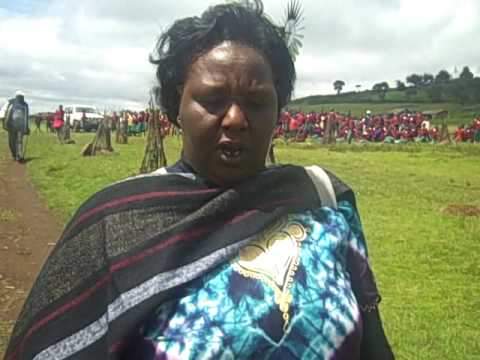The Ministry of Tourism, Wildlife, and Heritage has rolled out an Indigenous Knowledge Documentation and Digitisation (IK DoDi) project that aims at collecting and protecting traditional knowledge and cultural assets for the Kamba community.
Cabinet Secretary (CS) Penina Malonza said that the project is part of the government’s effort to protect the traditional knowledge and cultural expressions of all communities in Kenya.
Malonza was speaking in Makueni on Friday when she officially launched the project that will establish an indigenous knowledge innovation bank which will allow lawful access to the communities’ traditional knowledge and all assets through creativity and innovation to generate income and improve livelihoods.
“The DoDi project is being implemented by my Ministry in partnership with different stakeholders, including state agencies, county governments, and Indigenous Peoples and Local Communities (IPLCs),” said Malonza when she spoke outside Makueni Governor’s office.
“By providing legal certainty and clarity, the innovation bank platform will also prevent biopiracy of our assets,” said Malonza.
Further, she disclosed that the project is being implemented in line with international commitments and conventions such as the Convention on Biological Diversity (CBD), United Nations Educational, Scientific, and Cultural Organization (UNESCO), the World Intellectual Property Organization (WIPO), and the Nagoya Protocol, to mention a few.
She disclosed that the Constitution of Kenya 2010 recognizes culture as the foundation of a nation and obligates anyone accessing and utilizing its cultural heritage and intellectual assets to fairly and equitably share the resultant benefits, including technologies.
“Access should be through a consultative and transparent process between the owners and users of the resources or knowledge under a legally binding contract and mutually agreed terms,” she added.
The CS also revealed that some of the areas to be documented include Mulata Legendary Rock together with the Nzaui hills and the story of Akamba origin, Ngokomi as the last site of battle with the Maasai and Chyulu hills, and its scenic beauty, including the Kisyula caves.
“Heritage sites will provide a unique opportunity to develop a tourism circuitry with clear potential to extend to neighbouring counties,” she said.
Makueni is among the 13 counties earmarked to roll out the project in phase I, where Makueni is the fourth county after Murang’a, Narok, and Kisii that have already initiated the programme in their respective jurisdictions.
Other counties in phase I are Tharaka Nithi Nithi, Kilifi, Kakamega, Vihiga, Siaya, Garissa, Marsabit, and Turkana.
Malonza observed that indigenous knowledge and intellectual assets are low-hanging fruits awaiting minimal harnessing to gain entry into the market.
Consequently, she appealed to the community leadership through the Council of Elders to spread the information to all the people in the Lower Eastern Region, which comprises Kitui, Machakos, and Makueni.
“As you are aware, culture is largely devolved, and the counties are expected to continue with documentation and digitization of their Indigenous knowledge and intellectual assets for posterity,” Malonza said.
During the event, the IPLCs, through their council of elders, signed a MoU with the county government of Makueni before again signing with the National Museum of Kenya. The CS also signed an MOU with the county government.
The National Museums made a donation of cameras, tablets, and a desk-top repository computer that will store all the data that will be collected in the county.
The National Museum of Kenya has trained 250 youths on how to use the ICT equipment, and they are expected to collect the data required as from Monday, May 29, 2023.
By Tabitha Mwangi and Faith Mwende




